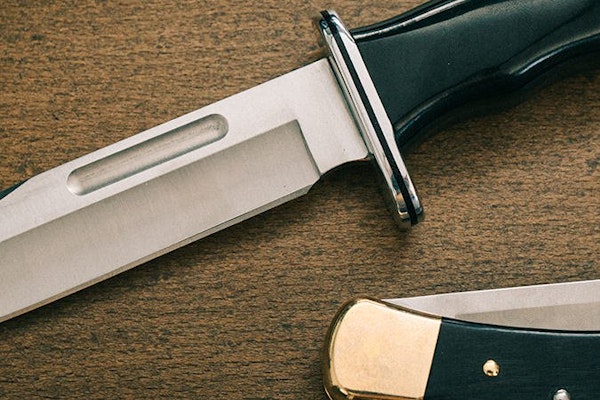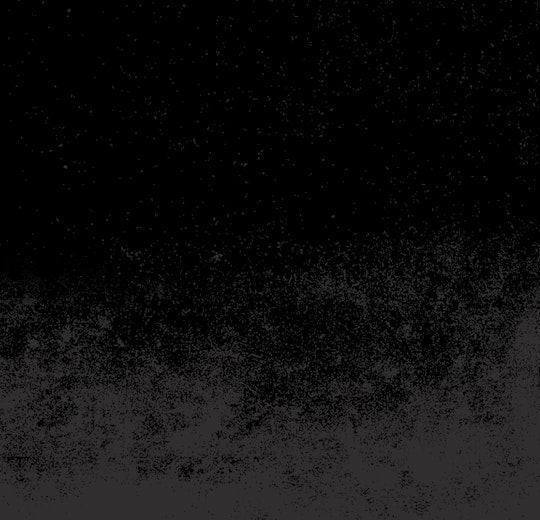Buck Knives is built on a family legacy. A legacy that extends over 4 generations of fathers and sons. That legacy wouldn’t have started without a risk by Hoyt Buck over 100 years ago. In the same spirit, Matt and Sarah Skoglund, and their two young children, have taken a chance on moving to Montana to start a bison ranch. Here’s the story of a family’s leap of faith into a new life.
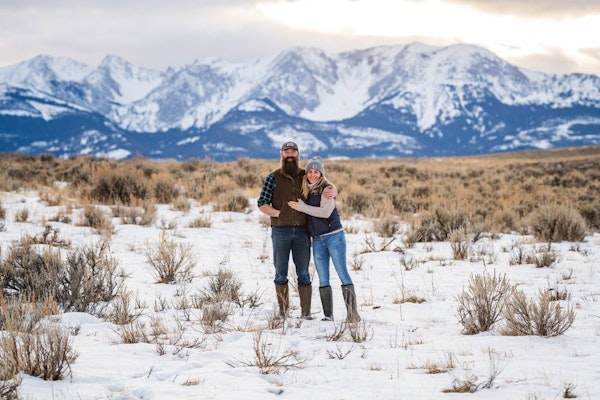
Regeneration for the Next Generation
Matt and Sarah Skoglund’s two children, Otto (7) and Greta (3) stand on the bed of the family truck, pointing out their favorite bulls. “The one with the blue tag, I call him Greta,” yells Greta.
One hundred and fifty head of bison paw at the sagebrush-scattered earth as they form a semi-circle around the truck. Keeping their calves tucked behind them, they inch closer with curiosity, for the most part keeping a respectful distance. A thousand-pound bull drops to his knees and rolls in the dirt – kicking up dust all around him.
The matriarch of the herd, Bison 440, makes her presence known by making direct eye contact and shaking her head.
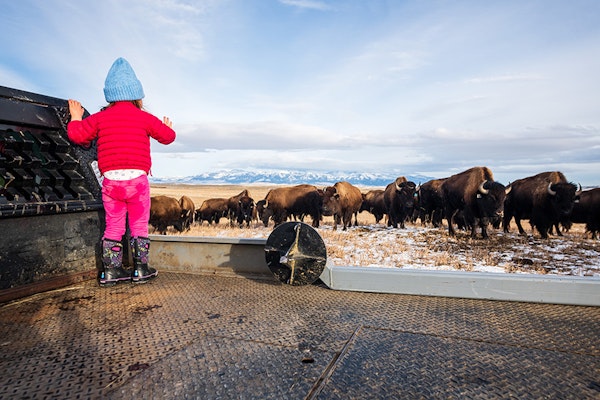
“It’s incredibly important to us that we pass down to our kids a deep connection to the land and where their food comes from,” says Matt Skoglund.
Matt and Sarah Skoglund own and operate North Bridger Bison, raising, field-harvesting, and selling sustainably-ranched bison meat direct-to-consumer in Montana, and all around the country. The ranch is tucked away on the western edge of the Shields Valley, with the Northern Bridgers to the west and the Crazy Mountains to the east , where their bison roam over 1,250 acres of sagebrush sea and diverse grasses.
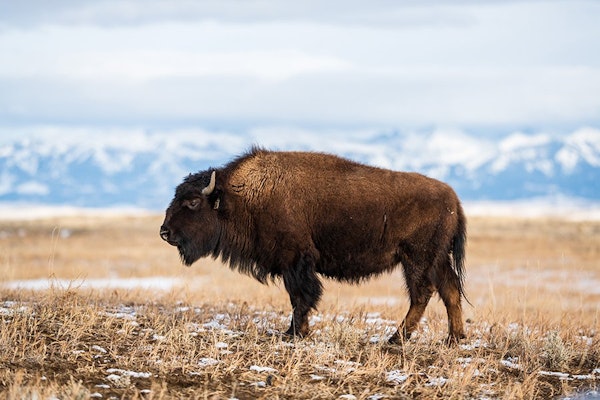
In 2008, a month after getting married, Matt and Sarah moved from Chicago to Montana, leaving behind careers in law and interior design to embrace the wider landscapes of the West and the opportunity for a life lived a bit slower. Matt took a job in environmental policy work for the NRDC – working specifically on the issue of Yellowstone bison for the good part of a decade, and Sarah is about to finish a Master’s in Social Work after working for the Cancer Support Community in Bozeman for several years.
“I remember seeing an article in our local newspaper about the need for more bison ranchers, and thinking to myself – that would be so cool for someone that knows how to do that,” laughs Matt.
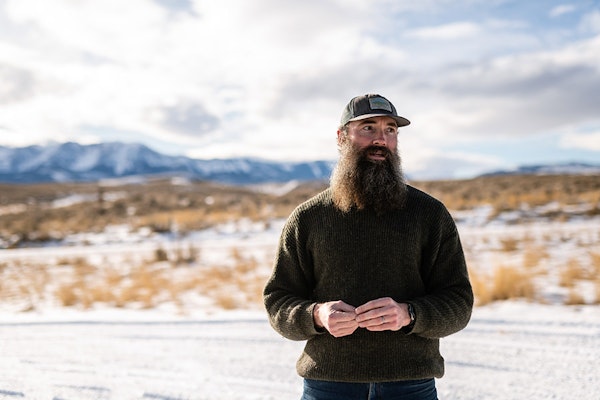
In the fall of 2017, Matt read a book called “Buffalo for the Broken Heart,” by Dan O’Brien, about Dan’s journey into bison ranching and pioneering of the modern day method of field – harvesting of bison, and something instantly clicked. “I thought to myself, that’s the right way to do it, and I want to do that. I really connected with it and knew I had to actively pursue this,” he says. Without any background or formal training in ranching or agriculture, he began to think more seriously about whether he could be the person to help fill the local demand for bison meat.
“I was craving to do something tangible, conservation-based, and land-based. I’m a passionate hunter and gardener; I’m a morel mushroom nut, and quality food has been a priority for me for a long time. Thinking from an entrepreneurial standpoint—everyone eats. If we’re lucky we get to eat three times a day, and what we eat has such a huge impact on the world—on people’s health, the planet’s health, and the climate’s health.”
With years of work, a lot of research, and a little luck, the Skoglunds’ dream of owning a bison ranch became a real possibility. When they found a few parcels of land in the Shields Valley of Montana, it felt like fate. They knew they had to go for it.
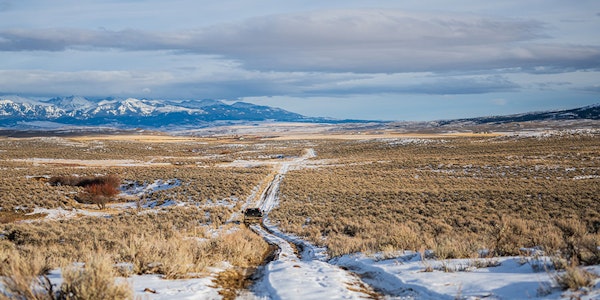
“I want to be clear,” says Matt, “we did not buy a turn-key ranch. We started this thing from scratch out here.”
Unlike most ranchers in Montana, the Skoglund’s were starting from scratch in every aspect of the word. They had not inherited a family ranch, nor did they grow up ranching or have backgrounds in agriculture. At first they were intimidated by the ranching community and the knowledge base associated with it. Everyone seemed to be a multi-generational rancher with a long history of learned knowledge and experience.
“It took a little while to get past that,” says Matt. “But the more I met with folks, and the more I learned, the more I realized that my insecurity around having no experience with ranching was actually an asset. I knew I’d make mistakes, of course, but I also knew I wouldn’t have to unlearn any bad habits. And we wear the fact that we’re newbies on our sleeves – we’re not pretending to be 3rd generation ranchers. We chose to do this, and we chose it in part because working lands in the West are disappearing.”
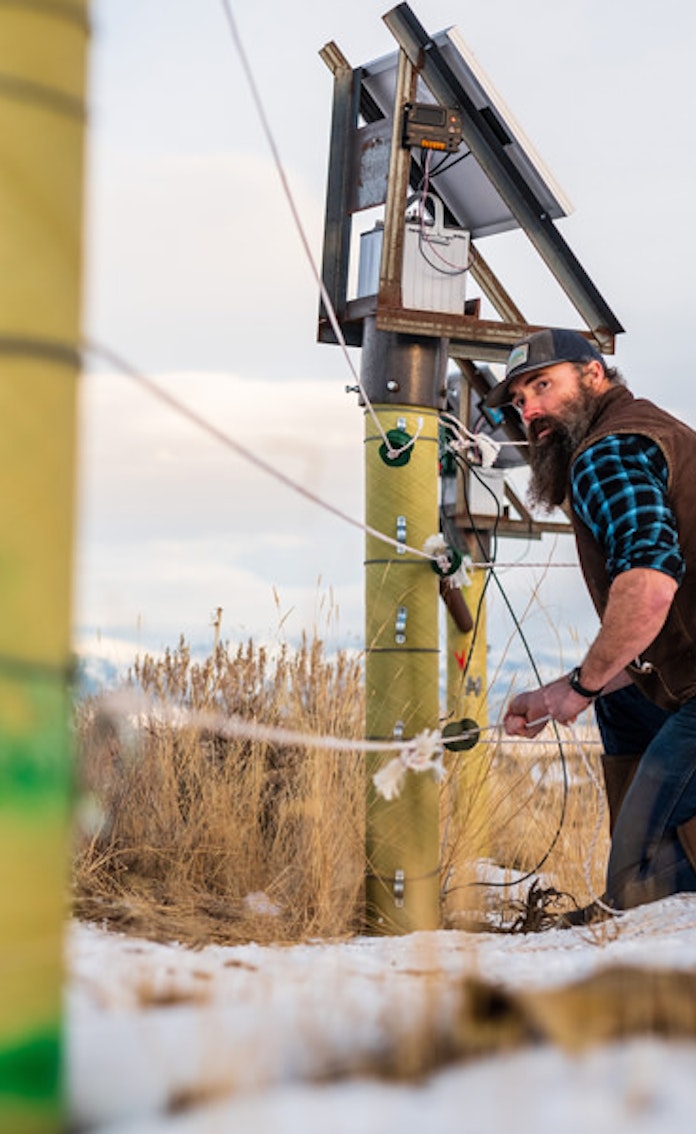
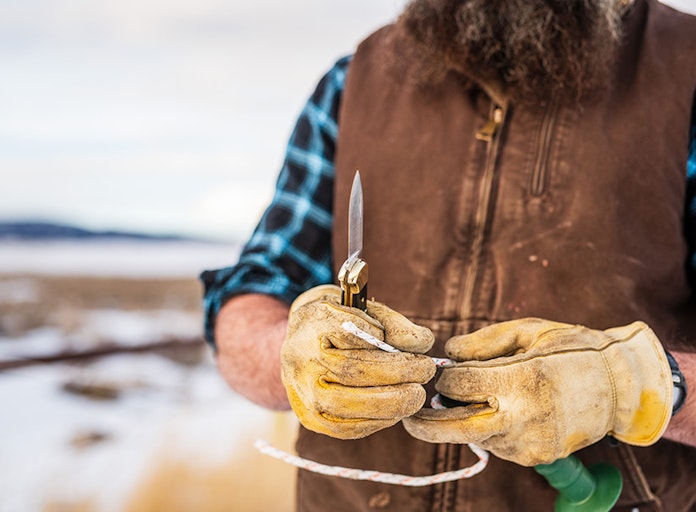
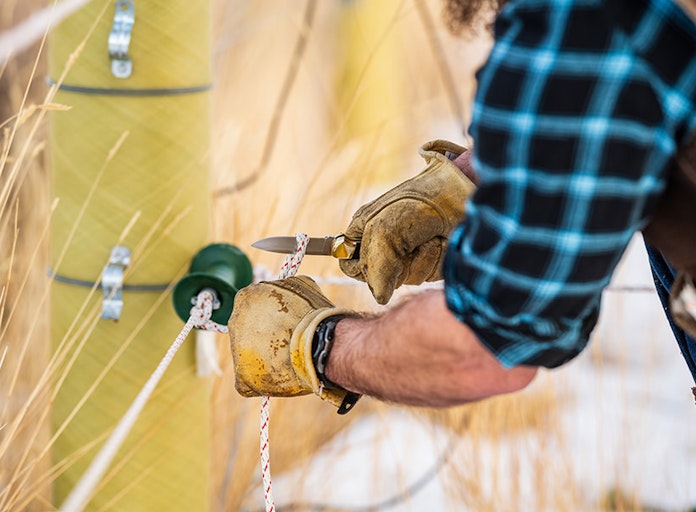
Of course, some of their cattle-ranching neighbors were surprised when they heard a family from Bozeman (and ultimately from Chicago) were planning to start raising bison nearby, but the Skoglunds were completely transparent with everyone about their plans, and they made it clear that they were “all in” on making a go at ranching – that their land and operation would be the polar opposite of a “hobby ranch.”
“Our neighbors are wonderful people, and getting to know them has been one of the most rewarding parts of this whole deal. They have been incredibly gracious and patient with us – and also extremely helpful in many ways,” says Matt. “They’re phenomenal ranchers with a deep love and respect for the land, and we are just really grateful for them.”
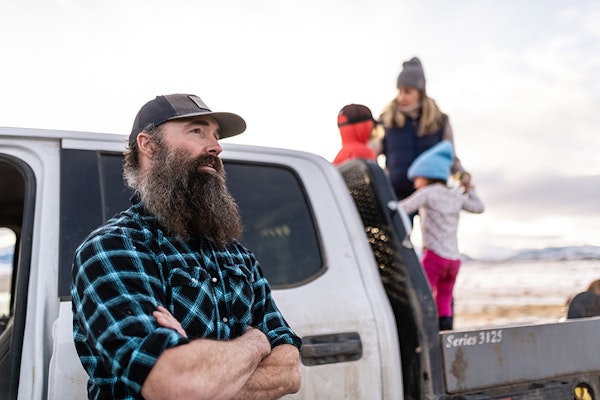
Out in another pasture, Greta and Otto chase each other through the sagebrush hooting and hollering, their boots crunching in the snow, while their dad fixes a gate on one of their solar-powered and wildlife-friendly fences. Sarah, watching her kids run wild, is perfectly at home in this landscape.
“We knew it was a risk when we jumped all-in to this, but it just felt like we were meant to do it,” says Sarah. “We wanted our children to grow up exploring outside and learning from nature."
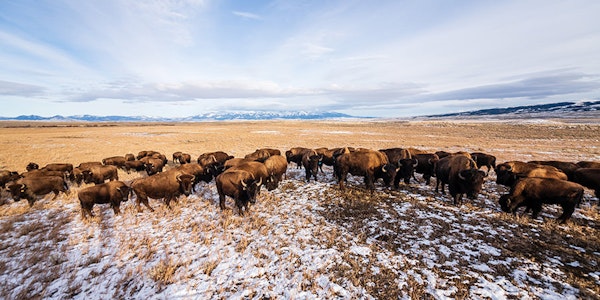
Matt field-harvests each animal on the ranch himself, a bedrock principle for the Skoglunds that’s at the root of why they chose this path in the first place – to ensure the harvesting process is stress-free for the bison. “It can sometimes take a while to get the perfect shot, but I refuse to ever rush it,” he says. “The bison is grazing one second, and then dead the next. There is no stress for that animal, which is important to us from an ethical standpoint, and there’s no stress in the meat, which makes a big difference from a quality standpoint.”
The whole operation, and it seems the Skoglund family itself, runs on several guiding principles: Work with nature. Be great stewards of the land. Work hard, and do good, quality work, whatever that work may be. Trust, transparency, authenticity, and passing these values on to their children.
“We work with nature, not against it,” says Matt. “We don’t use any herbicides, pesticides, fungicides, etc. We focus on improving our soil health and promoting diversity on the ranch. We don’t till or use a plow, and we rotate our bison through several pastures over the course of each year, allowing the land to recover.”
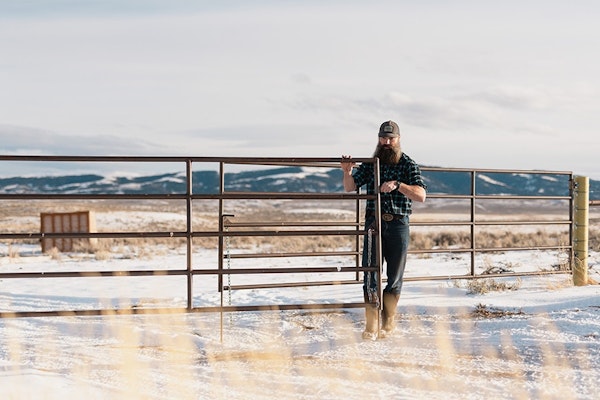
Matt’s passion for the environment and his background in conservation work is what really pushed him to follow this dream. “Ranching, especially livestock and grazing, get a bad rap for being bad for the land, bad for our water systems, bad for the climate. But the more I learned – the more I realized how backwards that often is – I began to see all the good that could come from good ranching practices, both for human health and the environmental health.”
“As they say, ‘It’s not the cow, it’s the how’ – it all comes back to your management practices on the land,” says Matt.
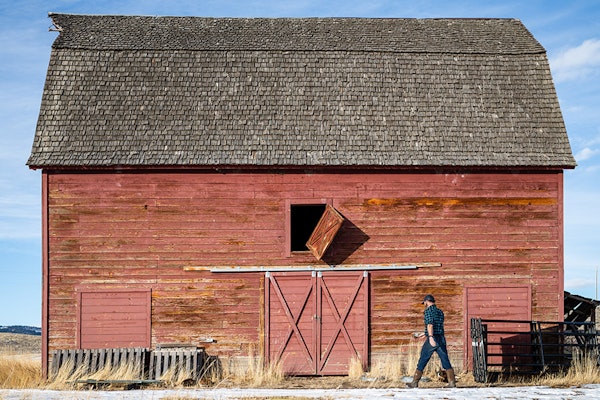
The evening light softens the landscape – blue and greens for as far as the eye can see – lighting the Crazy Mountains aglow in all of their majesty. Heading back to the truck, Otto has his dad’s favorite phrase on repeat: “it never gets old…it never gets old.”

